
If you like Japanese cars and have a decent Internet connection, you may have ventured into the Japanese market side of the vehicles. While there, you may have soaked in some of their car culture. If you dug deeper, you may have stumbled on their undoubtedly Japan-only stuff. We’ve already covered the truck equivalent: dekotora. Now it’s the cars’ turn: “Bosozoku”/Zokusha. You may or may not have seen it in low quality, grainy/pixelated pics on errant 15+ year-old Japanese websites or a 10+ year-old Western car forum thread. Still, there’s need to clear up the understandable bewilderment such machines cause.

Before we begin, the term bosozoku is defined as violent running/out of control gang/tribes. This hard to define term is usually applied to Japanese motorcycle gangs and their rebellious attitudes. Back in their heyday, their look was wild and unmistakable and their motorbikes reflected that, but it didn’t stop at two wheels: cars would get the bosozoku treatment as well. I’ve read around that this term is incorrectly used, but given that it’s too widespread on Western car forums, I’m using it with air quotes when applicable for the better understanding of the subject, though with this disclaimer. A more apt term would be zokusha, or ’gang car’. The term ‘kaido racer’ (road racer) is often used as well, usually as a sort of synonym to “bosozoku” and zokusha, but this term is also used broadly. That’s because there’s not just one particular style, but a variety that fall under the “bosozoku”/zokusha/kaido racer style umbrella terms.
Disclaimer: the type of person that liked this style was usually the working class type or those of lower income. Not all of them were in gangs. That’s not to say you won’t find annoying, law-breaking punks. Some bosozoku are truly dangerous, with potential of joining the Yakuza, regardless if it was back in their heyday or the sad-looking bunch of today. So when you see a zokusha-styled car, that doesn’t mean it’s zokusha. Also, keep in mind that those who build cars may take the liberty to mix and match styles. So this is just a general guide. But before we continue, let’s check out some of the stylistic inspirations:
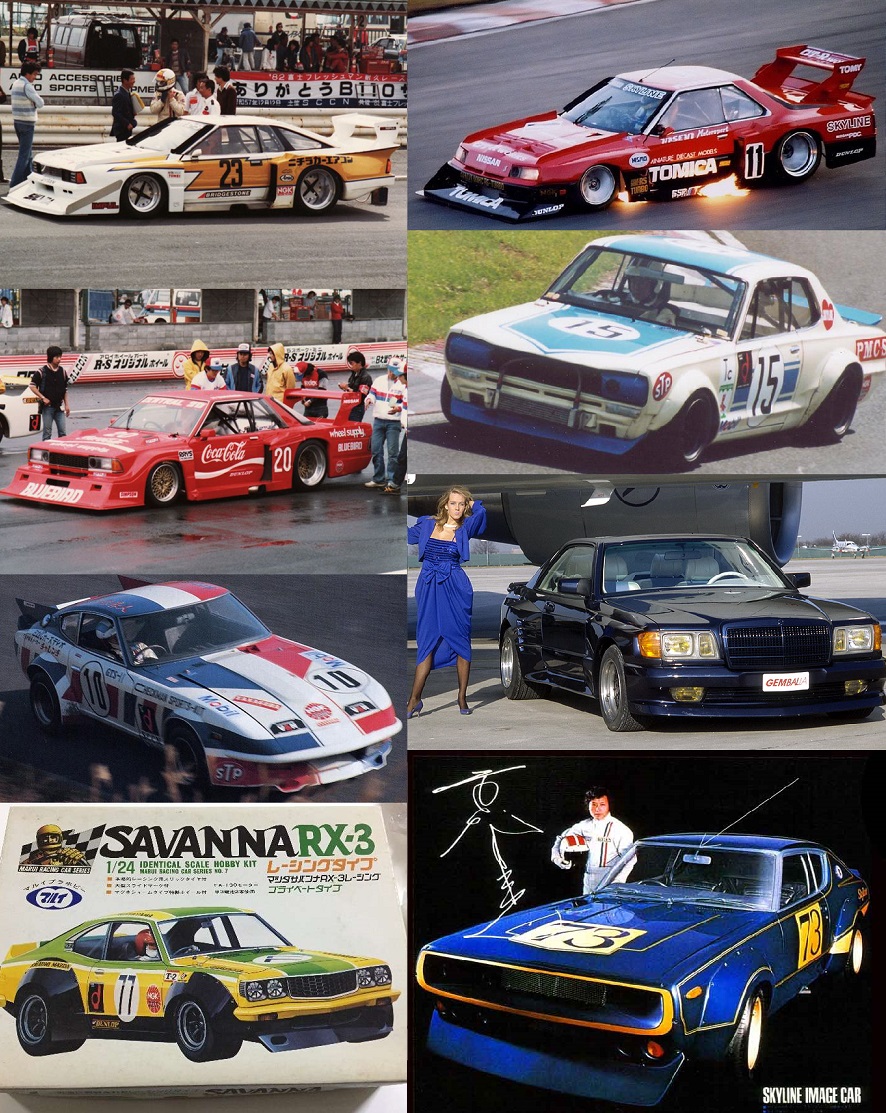
The bolt-on fender flares ranging from mild (both generations of Skyline 2000 GT-R) to wild (the Mazda Savanna, aka RX-3). The encompassing body work (from headlight covers and airdams, to elaborate body kits). The tall wings. The paint schemes (including liveries and sponsor decals). The colors. The wheel designs and dimensions (though it’s hard to admire the tire fitment with this batch). The stance. The raw racing tech (ex. exposed oil coolers). As we can see, motorsports definitely influenced the scene. And this is just from circuit-style motorsports, as influence can be found in other venues as well, like drag-racing (the organized Japanese-style drifting events came around the ‘80s, with its grassroots origins sporting function-over-form aesthetics). Even those with a less-than-sexy shaped car can draw inspiration (the Coca-Cola-sponsored Nissan Bluebird). Now, the Japanese racing scene of back then had similarities with its international contemporaries, but it’s how the Japanese public incorporated the looks into their builds that made ‘em stand apart from the rest, to the point that we’re discussing this look, dubbed kaido racer, zokusha or even “bosozoku” today. But you may have noticed the Mercedes-Benz. I’ve read enough Japanese entertainment to notice how much Japanese gearheads love their modified luxury imports, so you can bet that many used them as inspiration for their local fare.
Kyusha
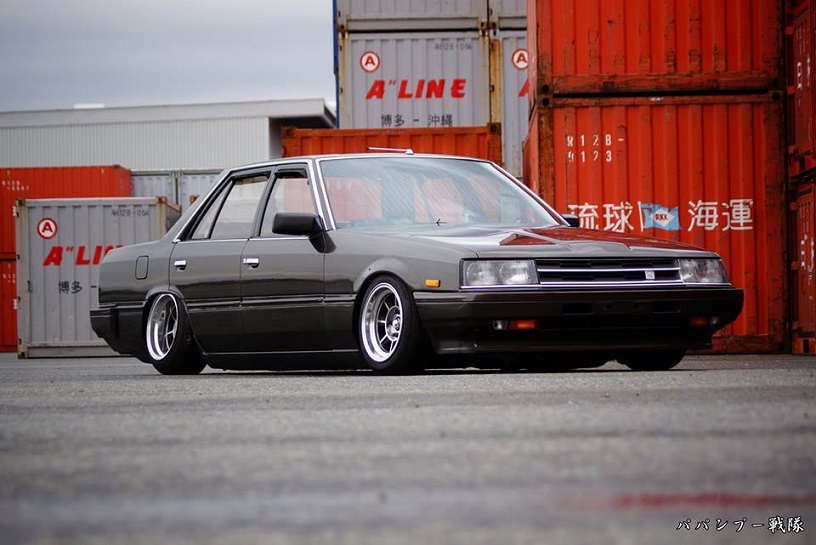 The stance may scream Shakotan, but the rest of the car falls under the Kyusha category.
The stance may scream Shakotan, but the rest of the car falls under the Kyusha category.
This is the most elegant example of car modifying under the “bosozoku”/zokusha style umbrella term: a nice stance, wheels, and maybe some fender flares (they do love their fender flares over there) or some other subtle body mod. If you’ve seen this type of aesthetic treatment before on modified Western machinery, that’s because it’s been going on for decades, not just the last 15 or so years. BTW, this isn’t the time or place to discuss impracticality of lowered cars. Kyusha means ‘old Japanese classic car’, so back in the day, a modified ‘Kenmeri’ Nissan Skyline wound qualify as kyusha while a brand new Toyota Celsior with the same treatment wouldn’t.
VIP

Ok, it may be a Western build, but it perfectly encapsulates the VIP style. Look through its windows.
For those that want a more luxurious take, VIP is where it’s at. They pronounce it “Bippu” over there (which sounds lame, I know). Even with lowered suspension, aftermarket wheels, subtle body kits and perhaps a different paintjob, VIP is the understated look under the “bosozoku”/zokusha style umbrella term… usually. There are some pretty wild widebodies and hues out there. VIP continued going strong into the 1990s and 2000s, years after the other looks waned in their relative popularity. This look can probably stand apart from the rest, but given that the style gives a gang boss feel, it fits with this lot. The best thing about VIP is that everything from the usual coupes and sedans to things like kei cars and vans, regardless of make, year or nationality (like a Chevrolet Astro!), can achieve the VIP style without ending up as a total joke.
Shakotan
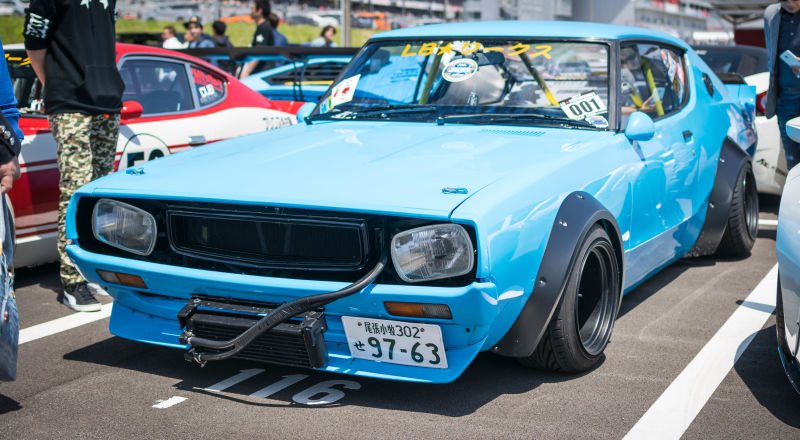
Photo credits: Ken Saito, who also covered the event where this Shakotan Nissan Skyline appeared.
Shakotan may mean ‘low car’, but it doesn’t stop there: take the Kyusha style and turn it up a bit, with a boy-racer intent, more body kit pieces, more aggressive stance, flashier paint and crazy exhaust pipes. This is where front oil coolers, deep dish 4-spoke rims, fender flares and aero bits like front-chin spoilers and wings appear over kyusha.
Yankii
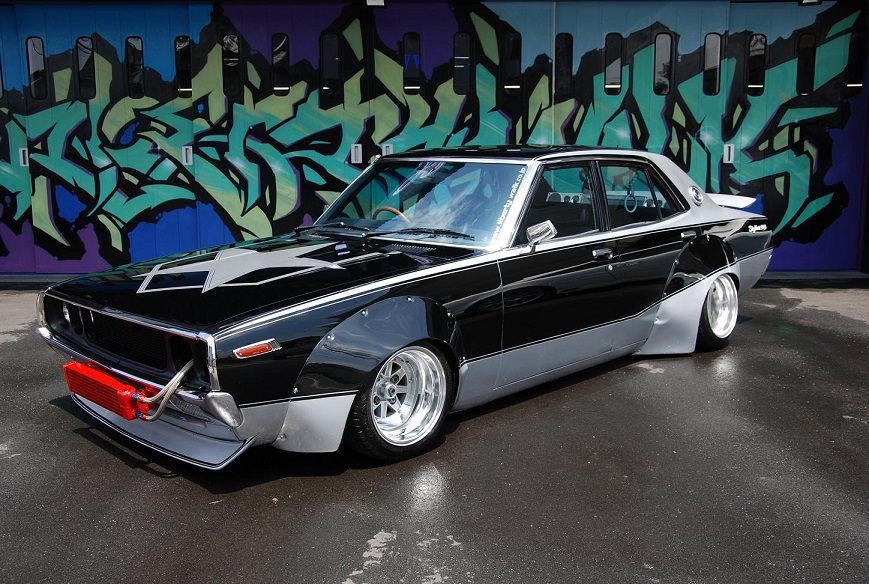
This car belongs to wide body kit manufacturer Wataru Kato of Liberty Walk/LB Performance (Go here for wallpaper size). It was even made into a model kit! This is one of a couple of his machines built within these design disciplines, including the blue Skyline and the out-of-shot the Fairlady Z above.
Yankii is pretty much the same as Shakotan, but a bit more aggressive, particularly when it comes to fender flares, rear doors be damned, if equipped. While I have my doubts that the term originated due to a clothing fashion trend in a sector of Japan back in the day, Yankii or Yankee is a nickname to delinquents. I’ve only seen it applied to female juvenile delinquent types. Yankee girls you just can’t be beat…
Grachan

I don’t care if it doesn’t have the full Tomica livery, it’s badass and I’m using it as an example!
For Grand Championship. As mentioned before, one of the biggest influences of the “bosozoku”/zokusha style comes from local motorsports. The Grachan look, whose roots come from the Group 5 ‘Super Silhouette’ class, where wild aerodynamics ruled the air. Those that followed this look paid homage to the racecars by imitating paint schemes, and aerodynamics long after the Group 5 ‘Super Silhouette’ class was no more, but it wouldn’t work unless you had the right car, like a Toyota Celica XX. You could try the look on a Toyota Crown if you’re willing to do it for a laugh…
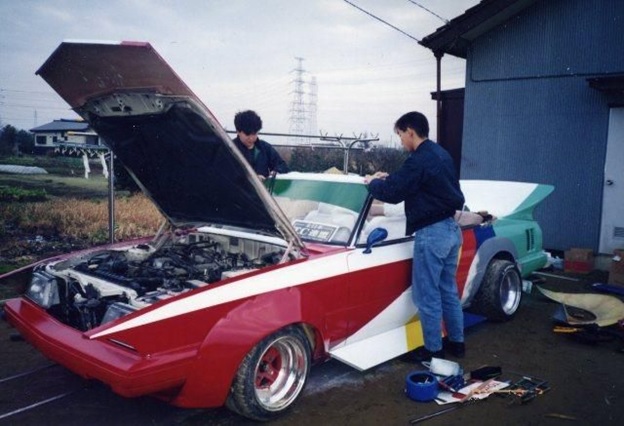
Image credits go to Banpei.net, who also identified this car as a Nissan Leopard F30, meaning this car was around a decade old when these lads started modding it. One may assume that the resale value wasn’t that great on your average Japanese sedan, particularly in Japan’s then-strong economy.
Visit http://www.banpei.net for more vintage Japanese car culture, from JDM to kaido racer.
Take all the styles above and you’ll get the overall “bosozoku”/zokusha look: extreme lowered stance, crazy wide fender flares, cartoony aero, loud paint schemes and even louder noise coming out of anywhere through pipes in all shapes and sizes; since the cars are already visually loud, they need to sound loud as well, right? But where did the inspiration for the nutty exhaust come from? Update: According to Top Gear UK, the exhaust treatments come from the bosozoku bike scene.
Is any of this legal? Well, going by the guidelines for Japanese motor inspection –the shaken– mild mods may pass if they meet the requirements, but it’s the extreme mods that will get you in trouble: extreme form-over-function suspension and steering alignment mods, protruding and noisy exhaust, protruding body mods (I’ve seen some that seem to be an affront to the Japanese vehicle size laws), etc. This also depends when these rules were written, but it doesn’t take much imagination to visualize Japanese gearheads modding their cars against their local rules… until the next inspection date comes around, where’d they probably take it all off, get the shaken, and put it all back together again, if so inclined. Update: or they could just take their cars out on special occasions and risk getting caught.

Of course zokusha, shakotan, yankii, VIP, Grachan (these last two not shown above) and kaido racer looks would appear in period manga and anime, these ones coming from Shakotan☆Boogie, basically a tribute to these styles as well as Japanese car culture. The styles are parodied today in anime as popular as One-Punch Man or obscure as Mamoru-kun. It’s a shame they all look too crappy for me to include here.
To a majority, the “bosozoku”/zokusha style is supposed to be a rolling middle finger at Japanese society, going against the grain of conventionality. No matter how much anime you’ve seen, Japan (and a lot of Asian countries) is rather buttoned down. So buttoned down that, if going by the whole “With every action there is an equal and opposite reaction” law, the reaction would be these styles, automotively speaking (you do not want me to go into the, uh, baby-making aspect. I’ll just say this: when kissing in public isn’t viewed as endearing as in other places, something’s gotta give). Remember, this is the country that has the saying “The nail that sticks out will be hammered back down”.
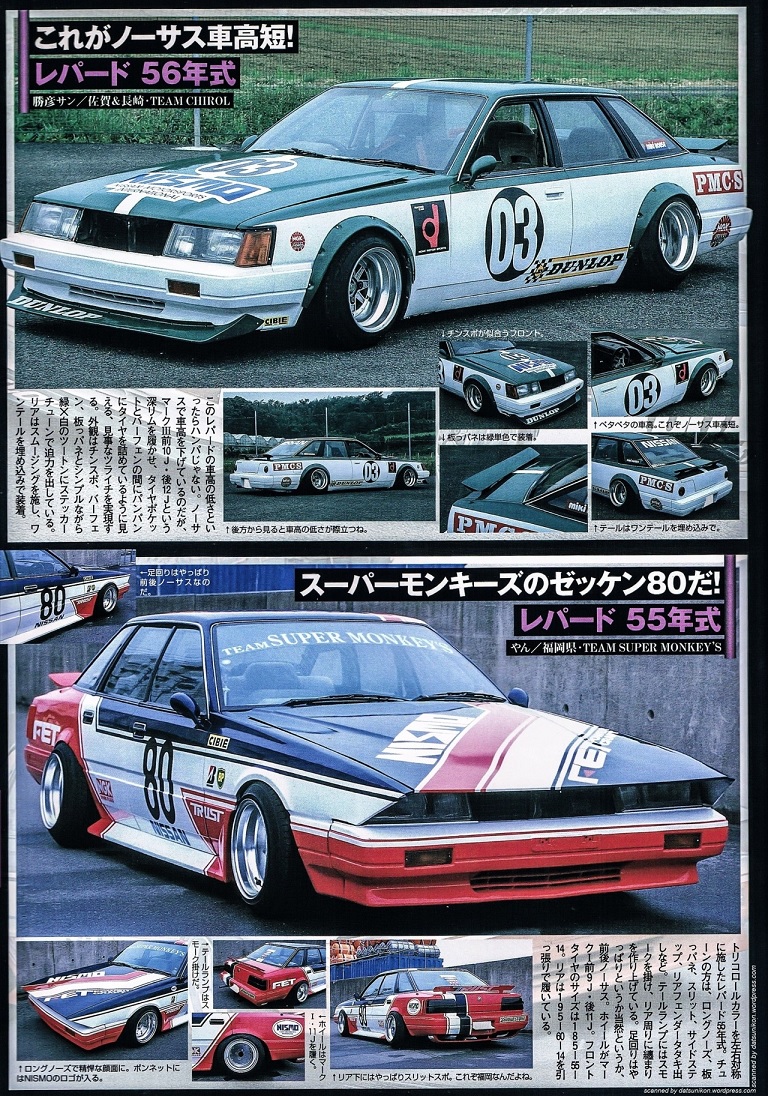
Click here for the bigger version and soak up all the details.
I haven’t thrown the term ‘kaido racer’ around as I have with “bosozoku”/zokusha. That’s because I‘m not sure if I would be using the term right, because while there were indeed a lot of cars sporting these looks set up to bomb down roads, I can’t say the same about those cars that are pretty much parade floats. In my opinion, a performance-oriented yankii-style Mazda Savanna (RX-3) is more kaido racer than a late 1970s hardtop sedan with the roof chopped off, extreme deppa (duck bill) chin spoiler and homemade widebody kit made out of wood and fiberglass, numerous zig-zagging takeyari (bamboo spear) exhausts, non-functioning oil cooler mounted up front and a Godfather-theme song novelty horn. As per one guy’s observation and opinion, kaido racer could be best described as six degrees off from the full “bosozoku”/zokusha treatment that I gave a description of. Of course, I could be wrong, and the term is applied equally to both street racers and motorized peacock feathers meant to grab your attention and pick up chicks. I wouldn’t mind seeing such machines speed down a road. One might want to watch their ankles with the latter, though…
While there are owners whose cars sporting these styles exude attention to detail and quality, not all of them are like that, case in point the Mighty Car Mods video posted above, which gives a rather eye-opening look at this type of style. Anybody can relate working on cars on the cheap, with marginal safety measures and a few tools. These guys are no different from any other gearhead around the world, though I still don’t condone some of the practices shown (particularly the complete removal of the rear springs to achieve that stance). It also shows that, at least in this garage, some mods are done for fun, for the hell of it. They don’t take it serious at all. I say that’s the beauty of the “bosozoku”/zokusha style. Heck, that’s the beauty of the Japanese grassroots car-modding scene! Granted, that doesn’t mean there aren’t purists that wouldn’t fight to keep off any mods off their cars, but I digress…
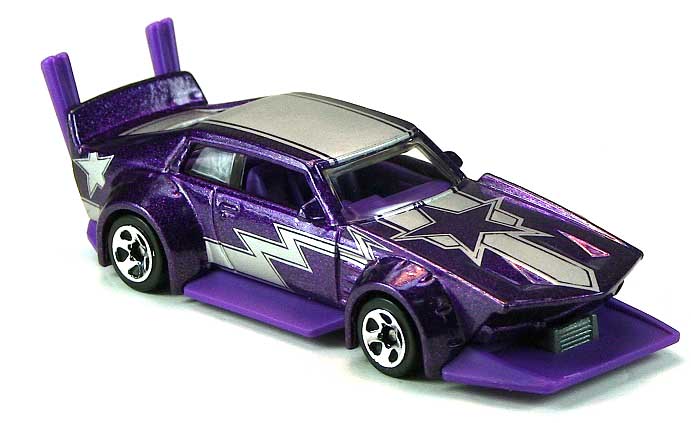
The “bosozoku”/zokusha/kaido racer style is alive in Japan. There are still group gatherings. They’re more nostalgia runs now and that’s good, as we don’t need any tomfoolery that further stymies motoring. Some do like to make some noise, though. Yes, there’s still some animosity towards these machines (some of it deservedly so, as you had joyriders driving recklessly in traffic in machines like these in the past, as well as chariots of real delinquents), but their influence is still apparent: the “bosozoku”/zokusha/kaido racer style has gone so far as to influence -inevitably I must add- some of the latest generation of Japanese customizers, like Wataru Kato (Liberty Walk/LB Performance), Ken Miura (TRA Kyoto/Rocket Bunny) and Akira Nakai (RWB) -even if that last one is more Euro-inspired, his machines gives that zero flips given vibe of “bosozoku”/zokusha/kaido racer machines. Some Westerners have applied some of these styling treatments to their builds. Heck, Hot Wheels released a kaido racer-themed car a couple of years back! So the love/hate to these styles will continue even if it’s slightly indirect and the blank canvases are usually (but not always) premium sports cars and not an old family sedan.
I’d rev my engine to that.
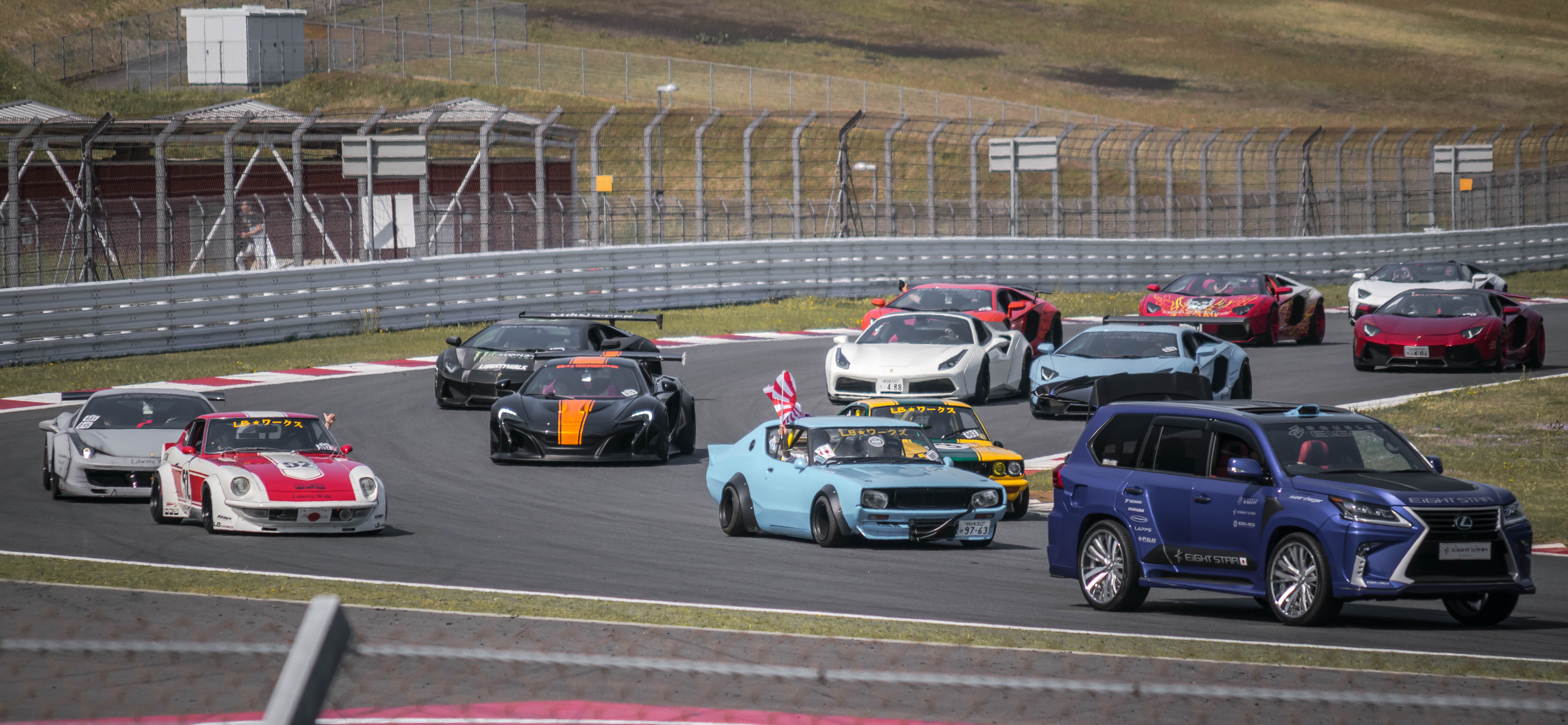
Blasted zokusha, crashing a trackday. Just kidding, those three were part of that particular event. But crashing a party does seem to go with the bosozoku/zokusha mentality.
–Tigerstrypes
References:
Opening pic: Found deep in my hard drive, but can be found at: http://www.ra64freddy.com
Inspiration: Tumblr (Gemballa and ZG), scale143.com (DR30 Skyline), http://japanesenostalgiccar.com (Hakosuka Skyline GT-R), ratsun.net (’72 Skyline 2000 GT-R), Petrolicious.com (the oxymoronic red Nissan Bluebird)
Kyusha Skyline: Pinterest
Shakotan Nissan Skyline and track day pic: http://jalopnik.com http://jalopnik.com/this-parking-lot-party-reveals-just-how-wild-japans-tun-1795012895
VIP Lexus LS: http://kyoei-usa.com
Grachan: ratsun.net
Boso group: ratsun.net
Nissan Leopard WIP: http://www.banpei.net
Shakotan☆Boogie compilation pic all originally downoaded from: https://www.longyp.com (NSFW, just in case)
Nissan kaido racers: Tumblr
Hot Wheels‘ Mad Manga (image cleanup by moi): http://hotwheels.wikia.com
Pingback: The Cars of Shakotan☆Boogie manga: | It Rolls.
Pingback: The Cars of Wangan Midnight manga: | It Rolls.